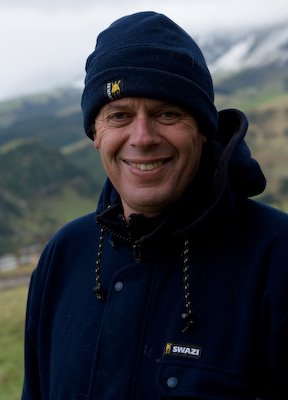Kia ora tatou:
People often ask me what I see in the landscape, what it means to me, what the theme of my work is. For a long time I have felt that this country has a uniquely mystical side to it, a quality that is somehow other. Maori have a word that somehow sums it up.
Wairua.
Loosely translated, the word means spirit but, like so many words in Maori, contains layers of meaning and significance. It's the spirit of a place, but it's more than that. Sense of place can come from the things that are there, the buildings, people, structures, landforms and the interrelationship between them. That is the approach
Robin Morrison took. Wairua contains more than that; it contains the idea of a mystical presence that dwells in the land and informs all, that affects the way people live and the way that they feel.
I have noticed that New Zealand film seems to have this unique darkness, a sense of something else. Vincent Ward’s
Vigil is a case in point. All his movies, in fact, seem to have this quality. It is as if he is listening to a radio station unavailable to the rest of us.
Snakeskin is another movie that springs to mind. Again that sense of a sinister supernatural infection. Even comedies like
Goodbye Pork Pie and
Came a Hot Friday have this same edginess. Sam Neill discusses this idea in his documentary
Cinema of Unease. You might want to rent it and decide for yourself.
In my travels around New Zealand, working on
White Cloud Silver Screen, I often wondered why this was (being on the road gives you a lot of time to think). I wondered what it was filmmakers saw that photographers did not. While the filmmakers seemed to have captured the essence (or inner sense) of our landscape, photographers are still heavily replicating an essentially European view of the landscape, a romantic pictorialism similar to that carried out by the English landscape artists of the 19th-century, who brought with them the watercolour aesthetic they had learned, and pasted it on the landscape in front of them. Bit by bit, day by day, as I considered this idea, I found it feeding into my photography and into the way I perceived the landscape and the feelings I began to have while being out in it.
Experiences in some of the forgotten, out-of-the-way corners of this country only served to reinforce it.
Bad Blood, the story of Stan Graham, an ordinary man who went mad and shot a number of people, is a case in point. Down in the hills behind Hokitika, it was easy to imagine paranioa setting in as a result of being watched by a landscape that wore a perpetual scowl.
Out beyond the city limits, beyond the pressures of human existence, in the dark corners of this country (and they are there) are some very old stories waiting for listeners. Sometimes the stories are turbulent, sometimes serene. But they are there, if we are ready to listen.
Te Wairua o te whenua. The spirit of the land.
































